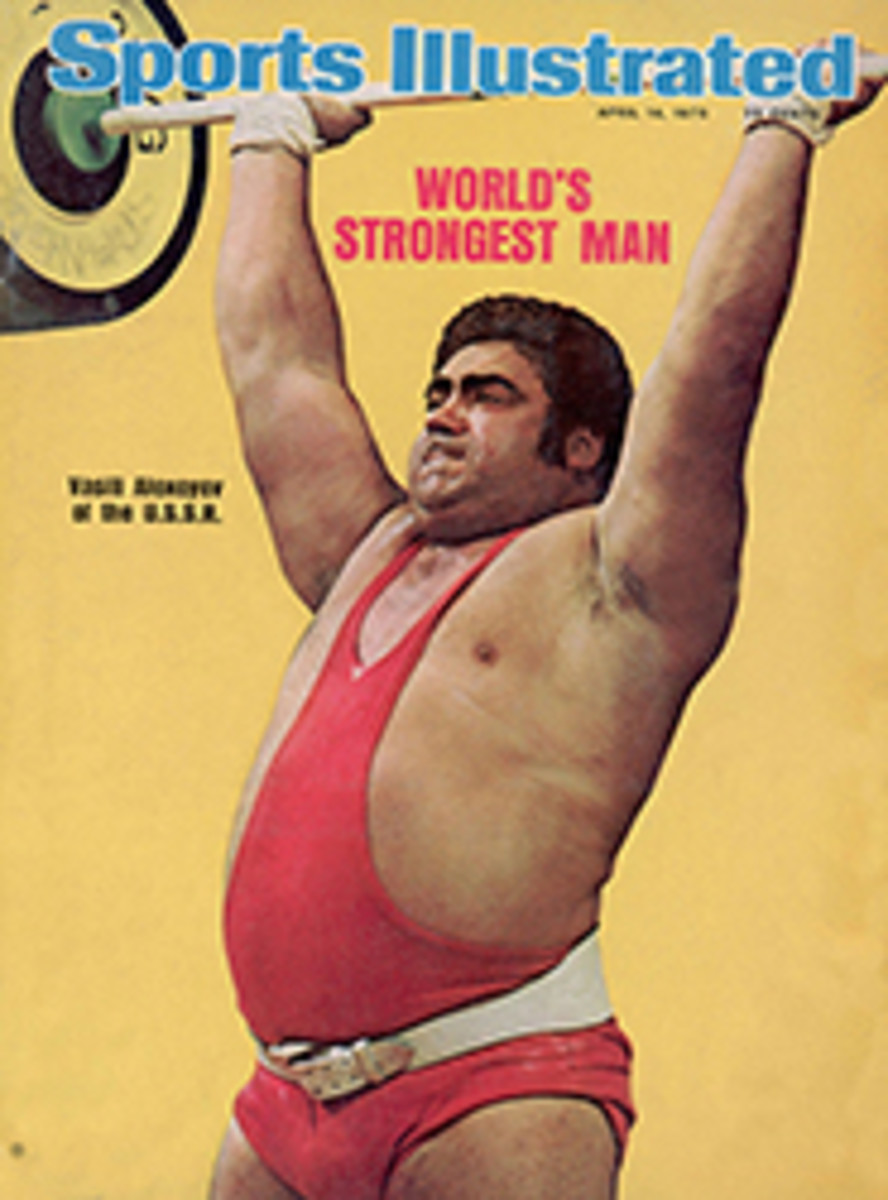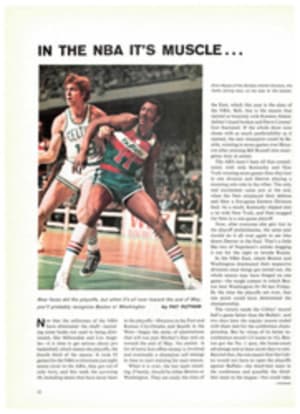
Out of the backyard
There are several preconceived notions about badminton, the most common being that it is merely an aristocratic pastime in which the participants agitate a cluster of goose feathers, a pleasure to indulge the idle rich. And lately, it has begun to consume the not-so-idle middle class. It is a game for warm Sunday afternoons in the backyards of America, played with sets from the supermarket, a family activity to while away the time as the barbecues char the hamburgers.
Badminton is all of that, to be sure. And that, say the people who play it seriously, is what has cruelly tarnished the image of an exquisite, artistic sport.
"We have been trying to get rid of the backyard image," said Mike Adams last week after he became the new U.S. amateur champion. "It is one of the fastest games. In the backyard, people pop it up, pop it up—and they think that's badminton. It's not.
"If we can just get people out to watch it. Even when we've got reporters to cover the sport, the interviews come off being funny. They can't get over the fact that it's a tough, competitive sport."
Badminton, removed from the pop-up backyard brand, is a game of speed and delicate finesse, of pirouettes and ferocious overhead slams, of deft services and floating ceiling skimmers, of feints and trickery. The physical and emotionally sapping characteristics of the game were manifested by Adams and others in the cheese-belt community of Waukesha, Wis., a bird slam from Milwaukee, where America's finest badminton athletes collected in the field house of the University of Wisconsin-Waukesha for the 35th national tournament. The tournament was co-sponsored by The Travelers insurance company and the American Badminton Association. Perhaps 300 spectators, many of them eliminated contestants, sat to watch on wooden basketball bleachers. Admission was free. Badminton, unhappily as far as the serious players go, remains the last sporting outpost of antimaterialism.
The atmosphere in the antiseptic gymnasium was quite different from that day on the estate of the Duke of Beaufort in Gloucestershire, England 102 years ago. The Duke gave a party, presumably in his backyard, and the sport was introduced to Western culture. It had been brought to England by some unknown Colonel Blimp from India where, under the name of poona, it had been a pastime of maharajas. The ducal holdings in Gloucestershire happened to be named Badminton.
At Waukesha, a long way and a long time from the Duke's digs in England, Adams, a 24-year-old transportation planner from Ann Arbor, Mich. with a skin-and-bones physique, met Gary Higgins, a 23-year-old free-spirited citizen from Alhambra, Calif., in the tournament final. Adams trains diligently to excel at badminton. "I practice a suicide drill," he said. "I use four courts. I run across two, then go backward. Then three, then four. All at full speed."
"Train?" asks Higgins. "Not me. I don't take the game seriously."
In the semis the unseeded and 13th-ranked Higgins had upset the No. 1 seed, Chris Kinard, a fellow Californian, 15-10, 5-15, 15-10. Adams, the No. 4 seed, beat second-ranked Chuck Oakley, also from California, 18-14, 15-12 in his side of the draw.
Badminton is a sociable sport. Adams spent the evening before the championship contest dancing the Bump in the motel disco. The next morning he was admittedly nervous for the title. Higgins had seriously celebrated his victory over Kinard with bacchanalian zeal. He, too, was in the disco, and stayed on after Adams left. In the morning, there were those among the California group who blathered unhappily about Higgins' cavalier behavior.
When Higgins was introduced as a finalist, he leaped to the floor from the fourth row of the grandstand and danced onto the court. Adams walked on, then mimicked Higgins' adagio.
In the early moments the match was close. Higgins occasionally winked to his California friends. Adams is a serious, emotional player and there were long interruptions while he checked the loft and speed of new shuttlecocks when they were brought into play. Finally he got down to the business at hand and, with the score 9-9, Adams took the next six points and the first game. He quickly did away with Higgins in the second game to win 15-9, 15-4.
"It's a shame," said one dismayed Californian. "Chris Kinard busts his butt and trains, and Gary didn't even care. This is no way to play for a national championship."
"If you're going to win, you have to be in condition," said Adams. "He kept smashing and he kept running. He didn't make me move."
The female half of badminton events continues to be contested under the title ladies, not women, as in tennis. And the lady queen at Waukesha was Judianne Kelly, a 26-year-old physical education teacher from Norwalk, Calif. Nearby is Long Beach, the hometown of Billie Jean, champion of libertarian causes, conqueror of Bobby Riggs and battler for equal prize moneys.
"I just won a California championship, which means I qualified to play in the Canadian Open," said Judianne. "In Canada the winner can win $1,600. It's not much money, but it's a big step for badminton."
A compact blonde with power strokes and a slamming game, Judianne dethroned Cindy Baker of Salt Lake City for her national singles championship. Her winning scores were 11-6, 11-8.
"I don't think I'm better than any man out there," Judianne said when asked if she responds to Women's Lib. "Mike Adams would beat me 15-5. I couldn't beat a men's A player. I practice against men all the time. They're quicker."
According to legend, badminton birds are made from feathers taken only from the right wings of geese. Left-wing goose feathers are unacceptable. And the best right-wing birds are manufactured in the People's Republic of China. A very complicated world of badminton the Duke of Beaufort made.

